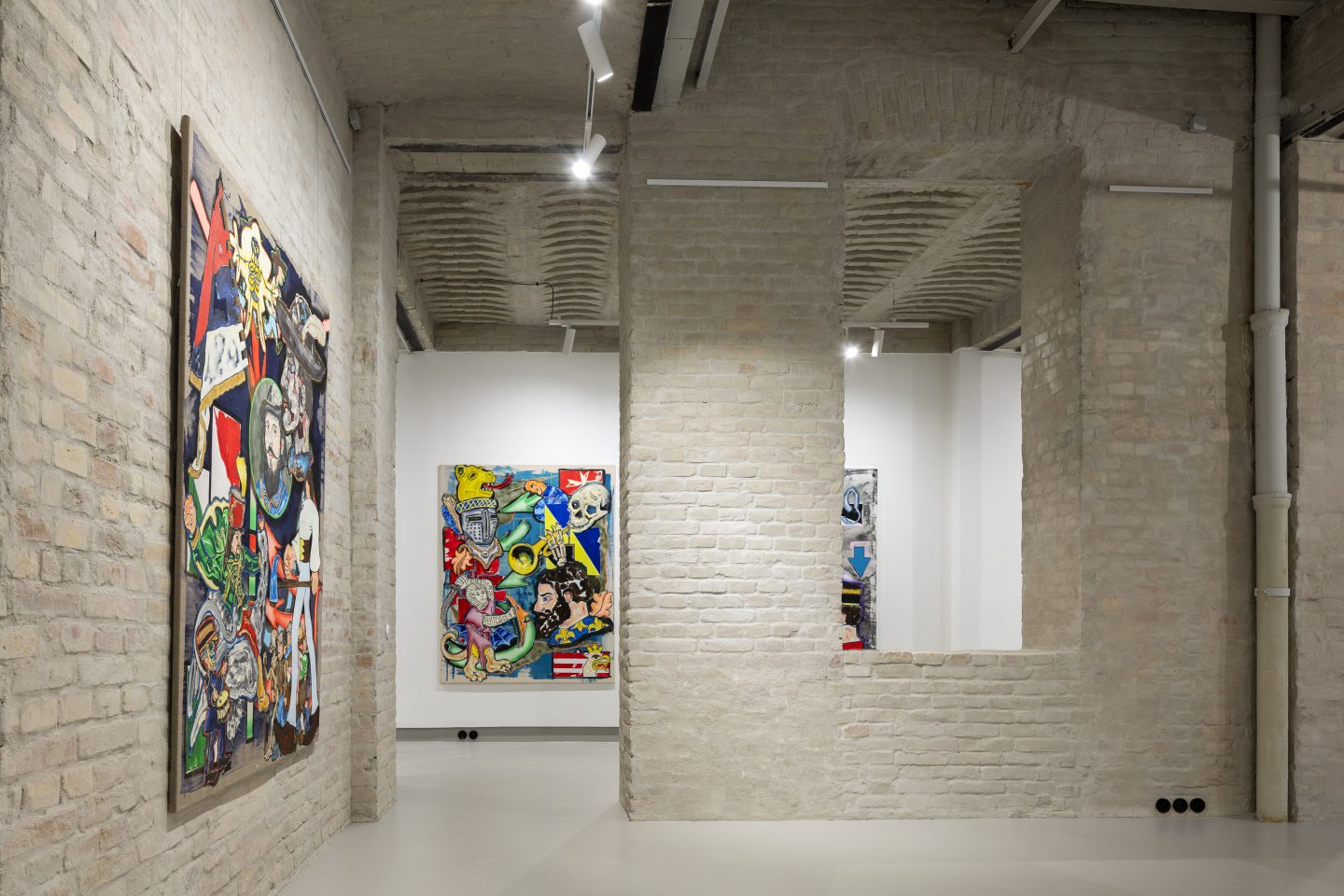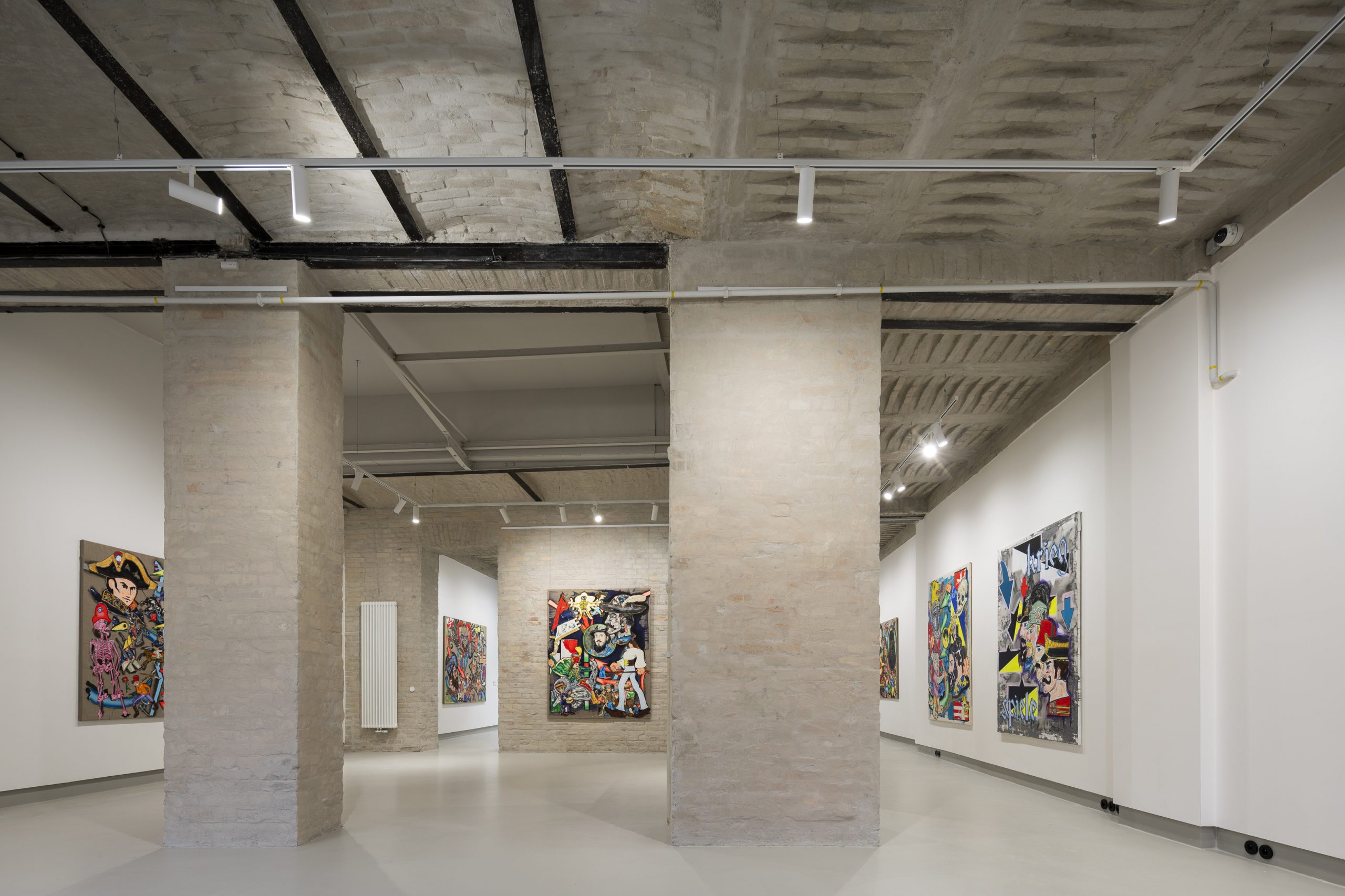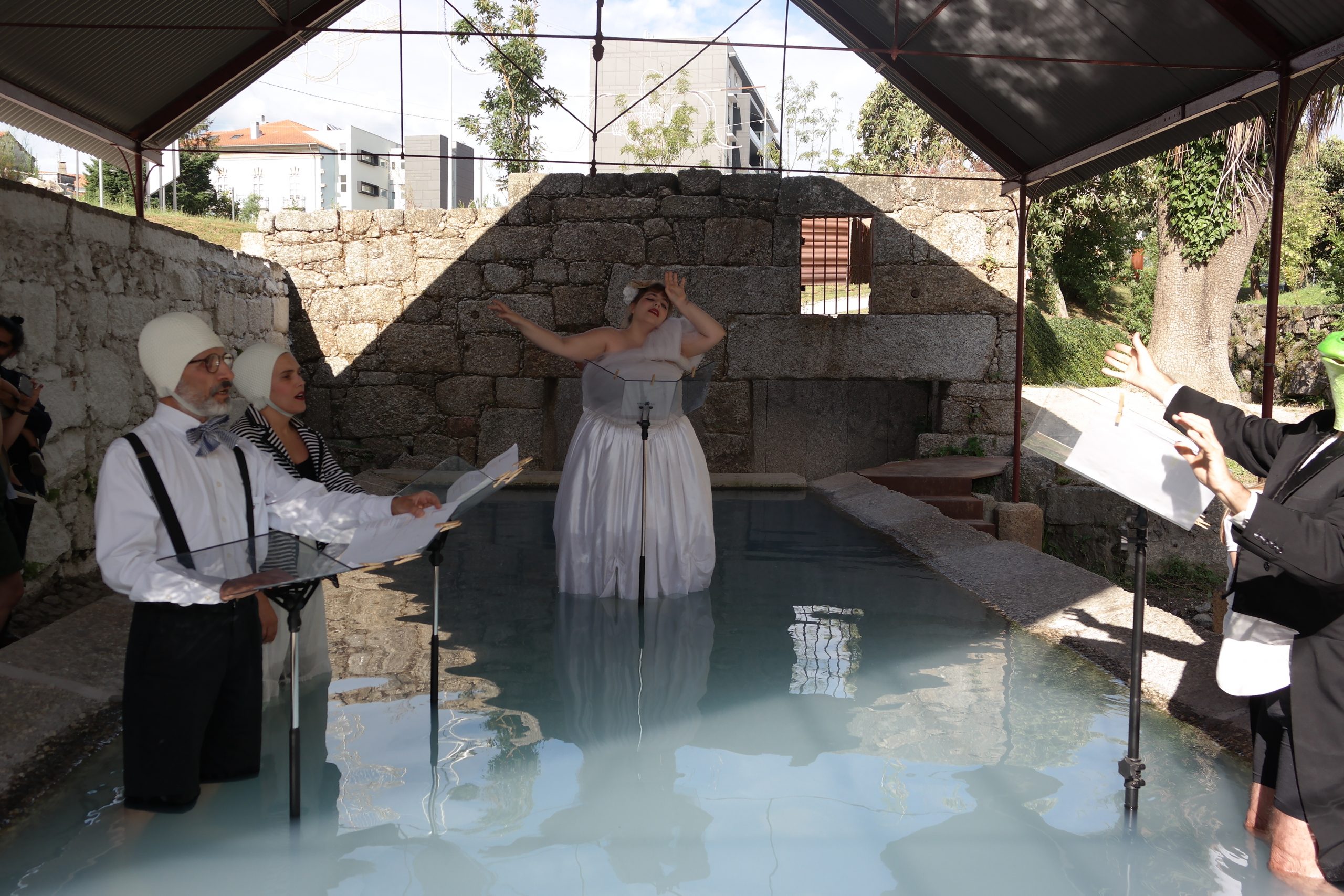STRATEGICON by Matej Fabian (1979) at the Soga Gallery reflects upon military strategy and how it has shaped Central European identity. Eleven large-format paintings spanning an area of 200 square meters offer an unconventional view of various historical events which occurred on the territories of modern-day Hungary and Slovakia between 907 AD to 1866. These events are not merely passive objects of observation but active participants in the shifts and reinterpretations of deeper socio-cultural and geopolitical structures.
Exploring a diversity of techniques and materials, the artist creates compositions in which partially revealed canvases form the basis for multi-layered combinations ranging from ink drawings and oil pastels to works with acrylics, sprays and canvas stitching. The deployment of units in the terrain can determine the result of a battle, but the unexpected can often disrupt plans. This multi-layered nature is reflected in compositions where the artist manipulates the foregrounds of the paintings and the direction of military operations. Arrows and military positions form the main compositional elements upon which the figurative layer is based. All of these factors examine the dynamic reformation of history and its meaning.
With an emphasis on the multi-layered perception of reality, the intra-connectedness of living and non-living entities and the latent connections between people, nature and technology, STRATEGICON forms a space for discussions about alternative aspects of human existence. In the increasing complex nexus of global challenges, this exhibition is more than just an artistic event. It is a moment in which we encounter visual reflections and critical analyses leading to an understanding of deeper layers of our cultural identity and historical contexts. STRATEGICON is a crux at which art transcends the boundaries of anthropocentrism and opens new paths of understanding and alternative connotations. The artworks are not static representations of the past but dynamic instruments of our current identity and future evolution.




